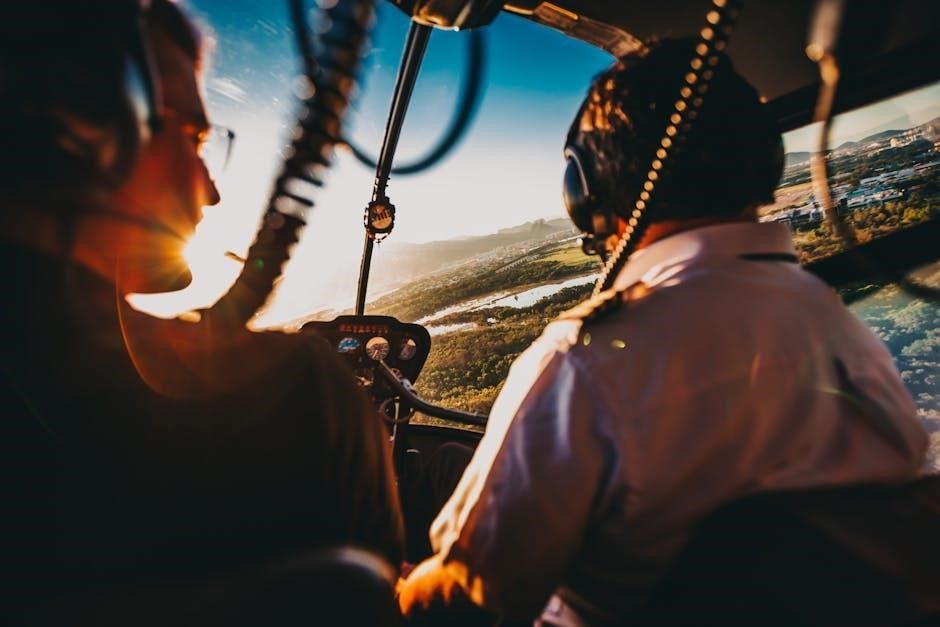everything explained for the professional pilot pdf
Professional pilot training combines FAA-approved coursework with hands-on flight experience, ensuring students master aviation skills, safety protocols, and theoretical knowledge to progress from private to commercial licensing efficiently.
1.1 Overview of the Professional Pilot Program
The Professional Pilot Program is designed to equip students with the necessary skills, knowledge, and certifications to pursue a career in aviation. It typically includes FAA-approved coursework and hands-on flight training, ensuring a comprehensive understanding of aviation principles, safety protocols, and practical flying techniques. The program usually spans 18-24 months, during which students progress from earning a Private Pilot License to a Commercial Pilot License. Ground school and flight training are integral components, covering topics such as aircraft systems, weather, navigation, and emergency procedures. Additionally, students often engage in immersive training apps and line-oriented flight training (LOFT) to enhance their skills. Upon completion, graduates are prepared to enter the aviation industry, whether as airline pilots, charter pilots, or instructors, with a strong foundation for career advancement.
1.2 Importance of Structured Training for Pilots
Structured training is essential for pilots to ensure safety, efficiency, and adherence to industry standards. It provides a systematic approach, enabling learners to build skills progressively, from basic airmanship to advanced techniques. This method ensures that pilots understand the “why” behind each exercise, fostering a deeper grasp of aviation principles. Structured programs also emphasize critical thinking and decision-making, crucial for handling emergencies and real-world challenges. By integrating ground school and flight training, structured programs create a holistic learning environment, preparing pilots for both theoretical and practical aspects of aviation. This approach not only reduces training time but also enhances overall competence, making it indispensable for professional pilots seeking to meet licensing requirements and excel in their careers.
1.3 Key Components of a Professional Pilot Curriculum
- Ground School: Covers aviation theory, weather, navigation, and regulations, providing the academic foundation for flight operations.
- Flight Training: Includes primary and intermediate training, focusing on basic airmanship, emergency procedures, and advanced flight techniques.
- Aircraft Systems: Teaches pilots about engine performance, avionics, and aircraft structure to ensure safe and efficient operation.
- Weather and Navigation: Equips pilots with meteorology knowledge and navigation tools to handle various flight conditions.
- Safety Protocols: Emphasizes emergency procedures, hazard mitigation, and best practices for maintaining flight safety.
- Licensing Requirements: Guides pilots through the progression from private to commercial licenses, ensuring compliance with FAA/ICAO standards.
These components ensure a comprehensive education, preparing pilots for real-world challenges and career advancement.
Flight Training Fundamentals
Professional pilot training involves FAA-approved programs combining hands-on flight experience with ground school, focusing on safety protocols and real-world challenges to build comprehensive aviation skills.
2.1 Ground School vs. Flight School: What Pilots Need to Know
Professional pilot training involves two critical components: ground school and flight school. Ground school focuses on theoretical knowledge, such as weather, navigation, regulations, and aircraft systems, while flight school provides practical flying experience. Both are essential for building a strong foundation in aviation. Ground school ensures pilots understand the principles of flight and safety protocols, while flight school applies this knowledge in real-world scenarios. Each license, from private to commercial, requires both components. Pilots must pass ground school exams and demonstrate flying proficiency to progress. Understanding the balance between academic and hands-on training is vital for success in aviation careers. This dual approach ensures pilots are well-prepared to handle both the intellectual and practical demands of flying safely and effectively.
2.2 Primary and Intermediate Flight Training Explained
Primary flight training focuses on developing basic airmanship skills, such as takeoffs, landings, and navigation, while intermediate training builds on these foundational abilities. Primary training introduces students to aircraft handling, emergency procedures, and essential safety practices. Intermediate training advances to more complex maneuvers, such as instrument flying and cross-country navigation, preparing pilots for real-world scenarios. Together, these phases create a structured progression, ensuring learners gain confidence and proficiency. Primary training establishes a solid foundation, while intermediate training refines skills, enabling pilots to tackle challenging situations effectively. This sequential approach ensures a comprehensive understanding of aviation principles and practical application, setting the stage for advanced training and professional licensing.
2.3 The Role of Flight Instructors in Professional Development
Flight instructors play a pivotal role in shaping professional pilots by providing personalized guidance, hands-on training, and expert oversight. They ensure students master flight maneuvers, understand aviation regulations, and develop critical decision-making skills. Instructors tailor training to individual needs, addressing weaknesses and reinforcing strengths. Their expertise helps students navigate complex scenarios, such as engine failures or adverse weather, building confidence and competence. Beyond technical skills, instructors instill a safety-first mindset and professional etiquette, essential for a successful aviation career. Through structured feedback and real-world simulations, flight instructors bridge the gap between theory and practice, ensuring pilots are fully prepared for the challenges of professional flying.

Aircraft Systems and Maintenance
Aircraft systems and maintenance are crucial for safe and efficient flight operations, covering engine performance, avionics, and navigation systems to ensure reliability and compliance with aviation standards.
3.1 Understanding Aircraft Structure and Design
Understanding aircraft structure and design is essential for pilots to appreciate how an aircraft operates safely and efficiently. The design focuses on lightweight yet durable materials, such as aluminum alloys and advanced composites, ensuring strength while minimizing weight. The aerodynamic shape of wings, fuselage, and control surfaces maximizes lift and stability during flight. Pilots need to grasp how these structural elements contribute to overall performance, including climb rates, fuel efficiency, and maneuverability. Additionally, the layout of critical systems like fuel tanks and landing gear is designed to optimize safety and balance. This knowledge enables pilots to make informed decisions regarding load distribution, flight planning, and emergency procedures. By understanding the interplay between design and functionality, pilots can better navigate the demands of various flight conditions and maintain aircraft integrity.
3.2 Engine Performance and Maintenance for Pilots
Understanding engine performance and maintenance is critical for pilots to ensure safe and efficient flight operations. Engines are complex systems requiring regular inspections, lubrication, and timely replacement of components like spark plugs and fuel injectors. Monitoring performance metrics such as power output, fuel efficiency, and temperature is vital to prevent overheating or mechanical failure. Pilots must also be aware of how propeller pitch and fuel injection systems impact performance under varying conditions. Proper maintenance involves adhering to manufacturer guidelines, logging service history, and addressing any anomalies promptly. This knowledge enables pilots to optimize engine longevity, reduce operational risks, and make informed decisions during pre-flight checks and in-flight emergencies. Regular maintenance not only enhances safety but also ensures compliance with aviation regulations and standards.
3.3 Avionics and Navigation Systems: A Pilot’s Guide
Avionics and navigation systems are indispensable for modern pilots, enabling precise control and situational awareness. These systems include GPS, autopilot, and glass cockpits, which streamline navigation and reduce workload. Understanding how to interpret data from instruments like altimeters, heading indicators, and attitude indicators is crucial for safe flight operations. Pilots must also master the use of communication and navigation aids, such as VOR, ILS, and ADS-B, to maintain situational awareness and comply with ATC instructions. Regular updates to avionics software and hardware are essential to ensure reliability and accuracy. Proper training on these systems enhances a pilot’s ability to navigate efficiently, even in challenging weather conditions, and ensures adherence to aviation regulations. Familiarity with avionics is vital for optimizing flight safety, performance, and decision-making.
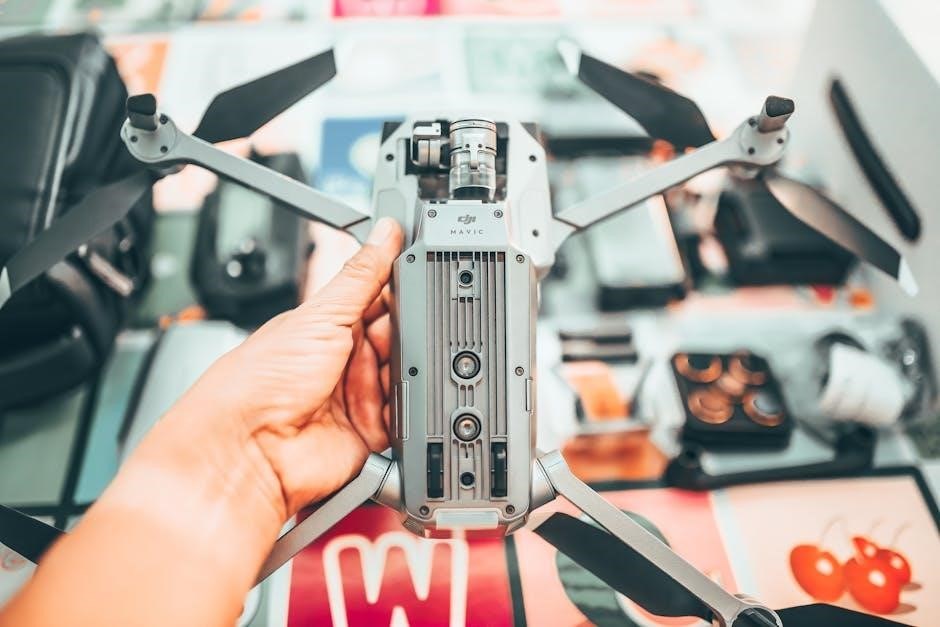
Flight Manuals and Documentation
Flight manuals and documentation are essential for pilots, providing critical information on aircraft operations, safety procedures, and legal requirements. They include the Pilot’s Handbook, flight manuals, and regulatory guides, ensuring compliance and safe flight practices.
4.1 The Pilot’s Handbook of Aeronautical Knowledge
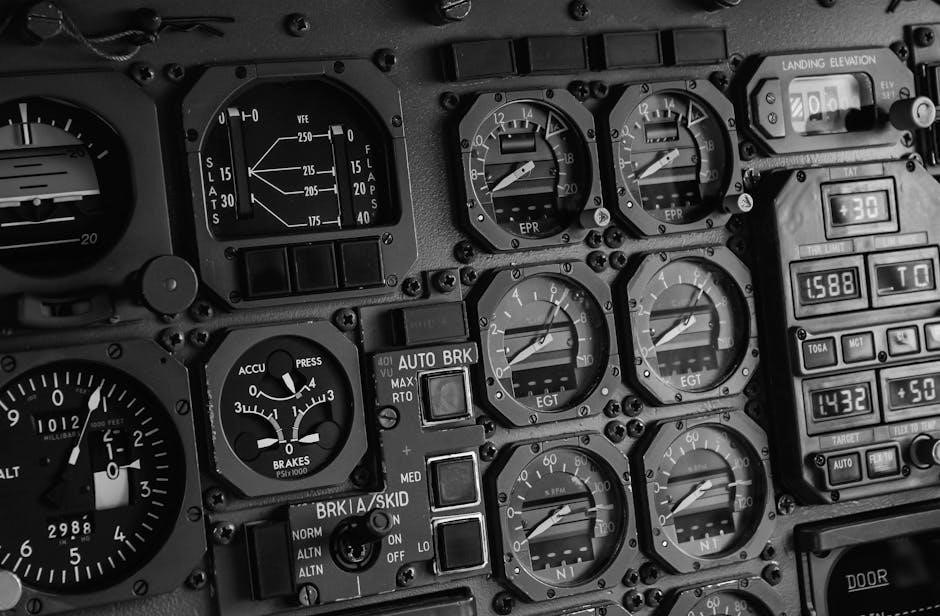
The Pilot’s Handbook of Aeronautical Knowledge is a foundational resource for professional pilots, covering essential topics such as aircraft structure, weather, navigation, and regulations. It serves as a primary study guide for licensing exams and provides detailed insights into aerodynamics, aircraft systems, and flight instruments. Available in PDF format, this handbook is regularly updated to reflect the latest aviation standards and safety practices. It is an indispensable tool for both private and commercial pilots, offering a comprehensive understanding of the principles and procedures necessary for safe and efficient flight operations. By mastering the content of this handbook, pilots can ensure they are well-prepared for the challenges of professional aviation and maintain compliance with regulatory requirements.
4.2 Understanding Flight Manuals and Other Essential Documents
Flight manuals are critical resources for professional pilots, detailing aircraft-specific information, operational procedures, and safety guidelines. These documents include the Aircraft Flight Manual (AFM), which outlines performance characteristics, limitations, and emergency procedures. Other essential documents, such as the Pilot’s Operating Handbook (POH), provide detailed instructions for aircraft operation. Understanding these manuals ensures compliance with regulatory requirements and enhances flight safety. Regular updates to these documents reflect advancements in aviation technology and safety standards. Pilots must thoroughly familiarize themselves with these materials to operate aircraft effectively and respond to emergencies. Additionally, supplementary resources like checklists and navigation charts are integral to efficient flight planning and execution, ensuring pilots are well-prepared for all phases of flight. Mastery of these documents is essential for professional competence and adherence to aviation regulations;
4.3 Legal and Regulatory Requirements for Flight Documentation
Professional pilots must adhere to strict legal and regulatory requirements for flight documentation, ensuring compliance with aviation authorities like the FAA and ICAO. Accurate and up-to-date documentation is mandatory for flight planning, aircraft airworthiness, and safety protocols. Pilots are required to maintain records of flight hours, medical certifications, and aircraft maintenance logs. The Pilot’s Operating Handbook (POH) and Aircraft Flight Manual (AFM) must be carried on board and updated regularly. Non-compliance can result in legal penalties, fines, or license suspension. Understanding these regulatory obligations is crucial for maintaining operational integrity and avoiding legal issues. Aviation authorities regularly audit documentation to ensure adherence to standards, emphasizing the importance of meticulous record-keeping. Proper documentation practices not only ensure legal compliance but also contribute to overall flight safety and professional accountability.
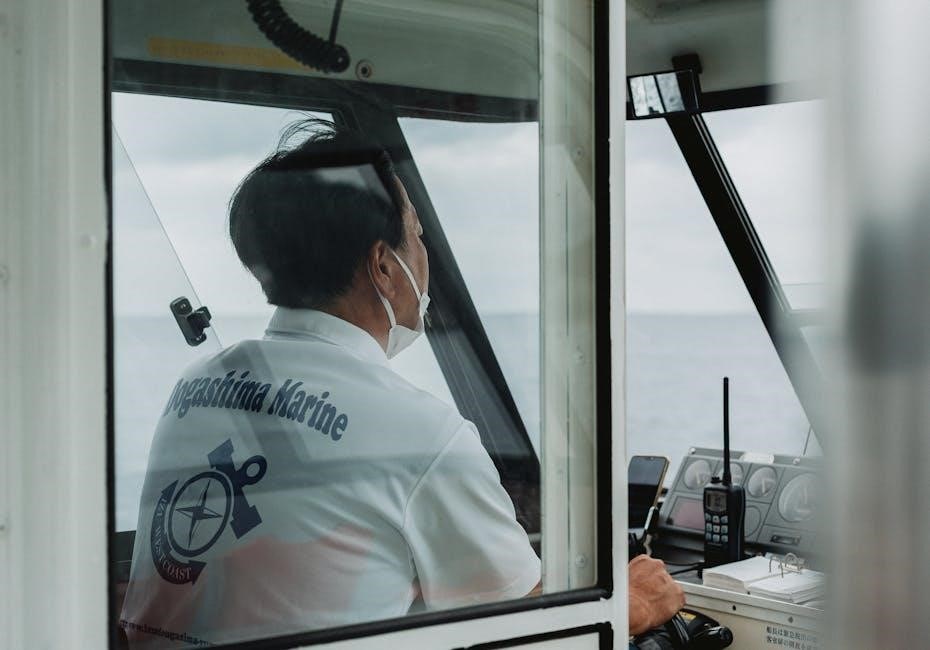
Weather and Navigation
Understanding meteorology, navigation techniques, and weather-related hazards is essential for pilots. Accurate weather forecasting and advanced navigation tools ensure safe flight operations under various conditions, mitigating risks effectively always.
5.1 Meteorology for Pilots: Understanding Weather Patterns
meteorology for pilots involves studying weather patterns, atmospheric conditions, and their impact on flight safety. Understanding phenomena like thunderstorms, icing conditions, and wind shear is crucial for navigation; Pilots use METARs, TAFs, and radar imagery to predict weather trends. Recognizing signs of turbulence, fog, and ceiling levels helps in making informed decisions. Weather forecasting tools, such as satellite imagery and weather apps, provide real-time data. Pilots must interpret synoptic charts to anticipate weather changes during flight. This knowledge enables them to avoid hazardous conditions, ensuring safe takeoffs, en route navigation, and landings. Effective weather analysis is a cornerstone of professional piloting, reducing risks and enhancing operational efficiency. Staying updated on weather patterns is essential for adapting flight plans and communicating with ATC.
5.2 Navigation Techniques and Tools for Professional Pilots
Professional pilots rely on a combination of traditional and modern navigation techniques to ensure safe and efficient flight operations. Traditional methods include using aeronautical charts, compass headings, and visual landmarks. Modern tools like GPS, Flight Management Systems (FMS), and Electronic Flight Bags (EFBs) provide precise location data and real-time updates. Pilots also utilize instruments such as VOR, NDB, and RNAV systems for en route navigation. Understanding how to interpret METARs, TAFs, and ATC instructions is critical for maintaining situational awareness. Additionally, advanced avionics and apps offer immersive training simulations, helping pilots refine their navigation skills. Effective navigation requires integrating all available resources to adapt to changing conditions, ensuring accurate course tracking and compliance with aviation regulations. These tools and techniques are essential for minimizing errors and enhancing overall flight safety.
5.3 Weather-Related Hazards and How to Mitigate Them
Weather-related hazards pose significant risks to flight safety, requiring pilots to be vigilant and well-prepared. Thunderstorms, turbulence, and icing conditions are among the most dangerous phenomena. Pilots must use advanced weather forecasting tools, such as METARs, TAFs, and radar imagery, to anticipate and avoid adverse conditions. Turbulence can be mitigated by flying at altitudes where it is less severe, while icing requires activation of anti-ice systems and diversion to warmer altitudes. Fog and low ceiling conditions demand precise instrument flying skills and reliance on GPS or ILS approaches. Additionally, wind shear and microbursts near airports can be detected using Doppler radar, enabling pilots to adjust landing plans. Effective communication with ATC and real-time weather updates are critical for navigating these hazards safely. Understanding meteorology and applying defensive flying techniques are essential for minimizing weather-related risks.

Safety and Emergency Procedures
Safety and emergency procedures are critical for pilots to manage engine failures, medical crises, and system malfunctions. Protocols include emergency landings, Mayday communications, and fire suppression techniques.
6.1 Emergency Protocols for Professional Pilots
Emergency protocols for professional pilots are standardized procedures designed to ensure safety during critical situations. These protocols include Mayday communications, emergency landings, and system failure management. Pilots are trained to assess situations quickly, prioritize passenger and crew safety, and execute predefined steps. Key components involve declaring emergencies, following checklists, and maintaining clear communication with air traffic control. Regular drills and simulations prepare pilots for scenarios like engine failures, medical emergencies, and system malfunctions; Adherence to these protocols minimizes risks and ensures efficient decision-making under pressure. These procedures are integral to aviation safety and are continuously updated based on industry best practices and regulatory requirements.
6.2 Handling Engine Failure and Other Critical Situations
Handling engine failure and other critical situations requires immediate and precise actions to ensure safety. Pilots are trained to identify symptoms of engine failure, such as unusual vibrations or loss of power, and follow emergency protocols. Key steps include securing the affected engine, declaring an emergency, and navigating to the nearest safe landing location. Checklist procedures and communication with air traffic control are critical. Pilots must remain calm, prioritize situational awareness, and make swift decisions to mitigate risks. Regular training and simulations prepare pilots for such scenarios, emphasizing the importance of checklist adherence and crew resource management. Effective handling of engine failure and other critical situations is essential for minimizing hazards and ensuring the safety of all onboard. These skills are refined through continuous practice and real-world application.
6.3 Safety Best Practices for Pilots

Safety best practices for pilots are foundational to ensuring secure and efficient flight operations. These practices include rigorous pre-flight inspections, adherence to standard operating procedures (SOPs), and continuous situational awareness. Pilots must maintain a culture of safety by staying vigilant, communicating effectively with the crew and air traffic control, and following checklists meticulously. Regular training and simulation exercises help reinforce these practices, enabling pilots to respond confidently to unexpected situations. Additionally, pilots should prioritize risk management by assessing weather conditions, aircraft performance, and operational limitations. Maintaining a healthy lifestyle, including adequate rest and stress management, is also crucial for optimal performance. By integrating these best practices into daily operations, pilots can significantly reduce risks and enhance overall flight safety. These habits are essential for building a strong safety mindset and ensuring the well-being of passengers and crew;
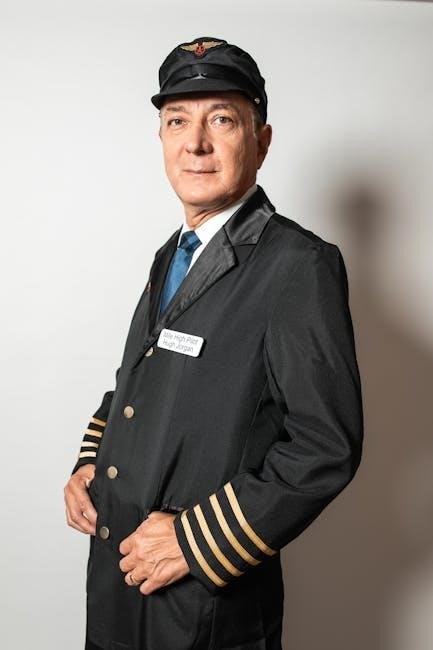
Advanced Flight Training Techniques
Advanced flight training incorporates immersive technologies, such as Line-Oriented Flight Training (LOFT) and innovative apps, to enhance realism and prepare pilots for complex scenarios, ensuring future-ready skills.
7.1 Line-Oriented Flight Training (LOFT): An Overview
Line-Oriented Flight Training (LOFT) is a comprehensive approach that simulates real-world scenarios, preparing pilots for operational challenges. It focuses on safety, decision-making, and crew coordination, bridging the gap between theoretical knowledge and practical application. LOFT sessions often involve realistic flight simulations, allowing pilots to practice handling emergencies, navigation, and system malfunctions in a controlled environment. This method emphasizes teamwork, communication, and problem-solving, mirroring actual flight conditions. By integrating LOFT into advanced training, pilots develop the critical skills needed for commercial aviation, ensuring they can respond effectively to unexpected situations. The training also covers regulatory compliance and standard operating procedures, making it an essential component of modern pilot development programs.
7.2 Immersive Training Apps for Modern Pilots

Immersive training apps are revolutionizing pilot education by offering interactive, engaging, and accessible learning tools. These apps utilize advanced technology to simulate real-world flight scenarios, allowing pilots to practice skills like navigation, emergency procedures, and aircraft handling in a virtual environment. CAE’s app for Apple Vision Pro and Sportys’ award-winning courses exemplify this trend, providing intuitive interfaces and real-time feedback. Pilots can access these tools anytime, making them ideal for supplementary training. The apps cover a range of topics, from basic airmanship to complex systems management, ensuring comprehensive skill development. By leveraging immersive technology, these platforms enhance traditional training methods, helping pilots stay proficient and prepared for the demands of modern aviation. They are a key innovation in the evolution of pilot training, offering flexibility and effectiveness for both new and experienced aviators.
7.3 The Future of Pilot Training: Innovations and Trends
The future of pilot training is being shaped by cutting-edge innovations and trends that enhance efficiency, safety, and accessibility. Immersive technologies like Virtual Reality (VR) and Mixed Reality (MR) are becoming integral, offering realistic flight simulations for training. AI-driven adaptive learning platforms are also emerging, tailoring training to individual needs and progress. Additionally, electric and hybrid-electric aircraft training is gaining traction, aligning with sustainability goals. Real-time data analytics and predictive maintenance tools are being integrated to optimize training outcomes and aircraft performance. These advancements ensure that pilots are better prepared for modern aviation challenges, making training more immersive, personalized, and environmentally conscious. As technology evolves, pilot training will continue to embrace these innovations, setting new standards for the industry.
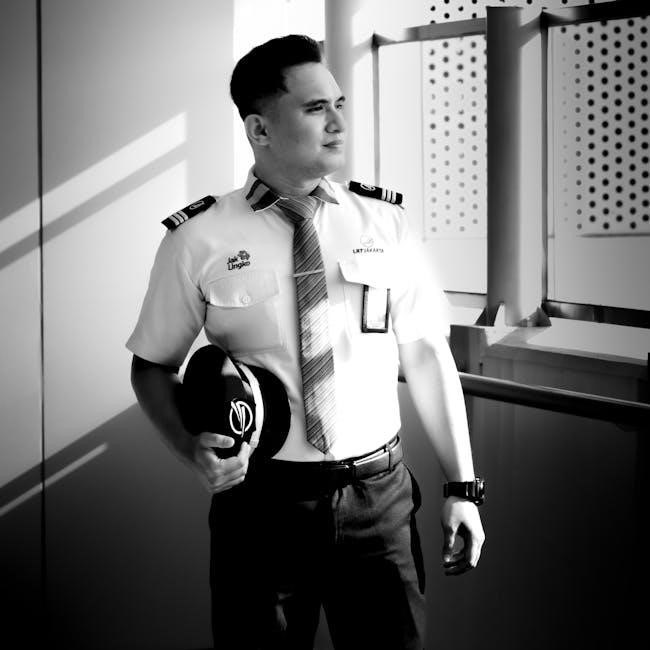
Career Development for Professional Pilots
Professional pilots can advance from private to commercial licenses, exploring roles like airline pilots or corporate aviators. Continuous training and networking expand career opportunities in aviation.
8.1 Building a Successful Career as a Professional Pilot
Building a successful career as a professional pilot requires a combination of skill, dedication, and strategic planning. Starting with a private pilot license, aspiring pilots progress through commercial licensing, gaining hands-on experience and theoretical knowledge. Flight training programs, often lasting 18-24 months, prepare individuals for commercial roles. Networking within aviation organizations and maintaining a strong professional reputation are crucial for opportunities. Pilots can advance to roles like airline captains or corporate aviators, with continuous training and adaptation to industry changes. Staying updated on safety protocols and leveraging immersive training tools enhances career longevity. Success also depends on resilience, as the field demands high levels of responsibility and adaptability. By focusing on both personal and professional growth, pilots can navigate the competitive aviation industry effectively.
8.2 Licensing Requirements: From Private to Commercial Pilot
Obtaining the necessary licenses is a critical step in becoming a professional pilot. The journey begins with a Private Pilot License, which requires ground school and flight training. Aspiring commercial pilots must then complete an FAA-approved program, passing rigorous theoretical and practical exams. The Commercial Pilot License involves advanced flight training and a comprehensive understanding of aviation regulations. Pilots must also meet specific flight hour requirements and demonstrate proficiency in various aircraft operations. Licensing ensures pilots are qualified to operate aircraft safely and professionally, paving the way for a successful aviation career. These structured requirements are essential for maintaining high standards in the industry.
8.3 Networking and Opportunities in the Aviation Industry
Networking is essential for professional pilots to access mentorship, job opportunities, and industry insights. Joining organizations like Women in Aviation International or the Experimental Aircraft Association provides platforms to connect with aviation professionals. These networks often host events, workshops, and career fairs, which are invaluable for career growth. Additionally, the aviation industry offers diverse opportunities, including roles as airline pilots, flight instructors, and unmanned aircraft system operators. Building relationships with instructors, peers, and industry leaders can open doors to advanced training and employment. Staying updated on industry trends and engaging in professional development further enhances career prospects. By leveraging these opportunities, pilots can navigate the competitive aviation landscape and achieve long-term success in their careers.
